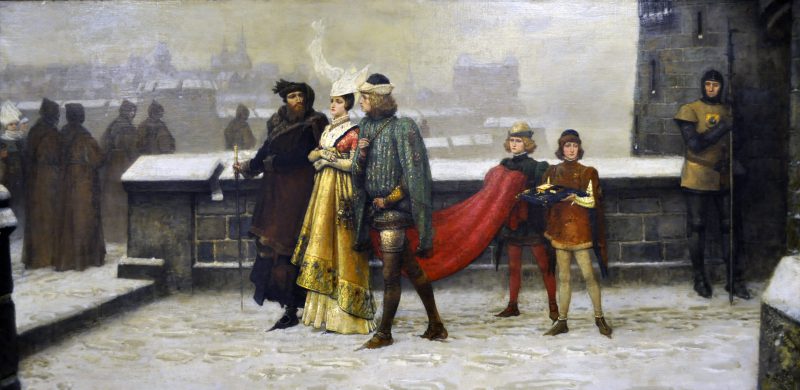Treasures From the Vault: June 2020

George Henry Boughton: Colder Than Snow
Born in Norwich, England, as a farmer’s son, Boughton’s family moved to New York with his family at the age of three. During his lifetime, he would live in England, France, and America, and his work was influenced by his travels and the artists he studied under. He came to be known as a figure and genre painter whose works were frequently used to illustrate books and serialized magazine stories by American writers, such as Nathaniel Hawthorne, Henry Wadsworth Longfellow, and Washington Irving. After studying in France, Boughton moved to London in 1861 and opened a studio. During this early period, much of his work focused on subjects of American Colonial history; an American critic noticed that “for early history of this country, his talents seems to be peculiarly fitted.” Vincent van Gogh, who lived London in the early 1870s, was much impressed by Boughton’s painting Godspeed! Pilgrims Setting Out for Canterbury. Then working as a minister, he gave a sermon inspired by the painting and wrote about it to his brother Theo. That painting is now part of the collection of the van Gogh Museum in Amsterdam.
An 1870 art critic suggests that Boughton was a humorist as well as a “poet-painter,” and his pictures “have always had something in them—something well rendered, and something personal.” The critic’s comments could be well-applied to his 1871 work, Colder than Snow. This oversized oil painting was one of the artist’s rare illustrations that does not appear to be attached to a particular literary work. Of his painting, Boughton commented that he tried to capture a 13th century French town in the winter where a number of richly-dressed figures are depicted on their progress to church. The focus of the work is a well-dressed woman, surrounded by her admirers and attendants. The earnest expression of her suitors is rebuffed by the cold look of disinterest from the lady that mirrors the frigid townscape. Writing about the painting, the London Times claimed that “Mr. Boughton’s picture is a middle-aged lesson to old and young gentlemen who are fools enough to fall in love with a coquette. The costumes are true, rich and graceful. The background of Medieval town, which looms faintly through frost-fogged air, is capitally done.”
While Boughton’s work is found in major collections throughout the world, and he was considered one of the most gifted artists of his day, today he is largely unknown. Rediscover this gifted artist and appreciate a work that is truly illustrative of its title in more ways than one.
